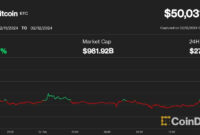What is Litecoin (LTC) Ł Cryptocurrency ? [Everything U Need to Know]
Litecoin (LTC) is very much a virtual currency, and much more. It is peer to peer, which means that it is not governed by any central authority, the currency merely passes directly between peers on the internet. It acts as a means to pay people anywhere in the world without an intermediary having to process the transaction. The payments are incredibly fast and extremely cheap to conduct.
Litecoin (LTC or Ł) is peer-to-peer cryptocurrency and open-source software project released under the MIT/X11 license. Litecoin was an early bitcoin spinoff or altcoin, starting in October 2011.In technical details, Litecoin is almost just like Bitcoin.
It was created by Charlie Lee in 2011 and now, nearly ten years later, is the seventh-ranked cryptocurrency (at the time of writing), in terms of market cap. It has experienced some massive price increases in its time, for example in November 2013 the price of Litecoin increased by 100%.
NOTE: Litecoin is a fork of Bitcoin, which means it is based on the same software with some updates and changes. In the case of Litecoin, the updates allow transactions to take place near-instantly with much lower network fees than you would pay with Bitcoin.
Litecoin is community supported by volunteers who work to update the open-source code that runs the Litecoin network. Just like Bitcoin, Litecoin uses blockchain technology that makes transactions secure.
Transactions on the Litecoin network are tracked by miners, which are processing computers that can earn Litecoin for doing the processing work behind the scenes. Based on the current configuration, there will be a maximum of 84 million litecoins created before the network stops issuing new coins.
KEY TAKEAWAYS
- Litecoin is an early altcoin developed by former Google engineer Charlie Lee in 2011.
- It has been called the silver to Bitcoin’s gold, and at its height was the 3rd largest cryptocurrency by market cap.
- Because its structure is similar to Bitcoin’s, it has been used as a testnet or testing ground for improvements that later were applied to Bitcoin.
Special Features of Litecoin
Because it is a fork of Bitcoin, Litecoin works just like its older and bigger sibling in most ways. But the special features that set it apart make it a lighter alternative to Bitcoin, hence the name Litecoin.
Litecoin is run by a dedicated group of developers who coordinate on social media and Github, a coding platform. Because it is open source, you could make a copy of Litecoin for free and make changes to the code to use for applications or even launch your own lightweight cryptocurrency if you wanted to.1 But for the vast majority of people, sticking with existing cryptocurrencies is the best way to go.
How does Litecoin work?
A modification of the Bitcoin code, Litecoin has many similar features. So, if you know how Bitcoin works, you’re likely going to have an easy time understanding Litecoin.
Litecoin uses cryptography to enable ownership and exchange of its cryptocurrency, LTC, and its software places a hard limit on the amount of LTC that can ever be created at 84 million.
Like Bitcoin, Litecoin also uses a form of proof-of-work mining to enable anyone who dedicates computing hardware to add new blocks to its blockchain and earn the new Litecoin it creates.
The two main differences are that Litecoin aims to finalize transactions faster and that it uses a different mining algorithm. On Litecoin, new blocks are added to the blockchain roughly every 2.5 minutes (as opposed to 10 minutes on Bitcoin).
Litecoin’s mining algorithm originally aimed at reducing the effectiveness of specialized mining equipment, though this would later prove unsuccessful. (Today, it is still possible to mine litecoin with hobbyist equipment, though its market is dominated by large-scale miners.)
Litecoin has since proven a valuable test ground for more experimental cryptocurrency features.
In 2017, Litecoin adopted “Segregated Witness,” a technology that helps cryptocurrencies add more transactions into each block. Later that year, the first Lightning transaction was completed on Litecoin, a development that showcased how it could use a layered network design.
Litecoin vs. Bitcoin
The proponents of Litecoin say that it was created to complement Bitcoin, not as a substitute for it. However, they do claim that Litecoin has some advantages over Bitcoin.3
| Litecoin | Bitcoin | |
| Liquidity and supply | Maximum supply of Litecoin is 84 million LTC | Maximum supply of Bitcoin is 21 million BTC |
| Block time | One Litecoin block is generated every 2.5 minutes | One Bitcoin block is generated every 10 minutes |
| Technology adoption | Litecoin architecture allows quicker technology adoption | Bitcoin was at least three months behind Litecoin in implementing a certain technology upgrade |
Due to Litecoin’s use of the scrypt algorithm, FPGA and ASIC devices made for mining Litecoin are more complicated to create and more expensive to produce than they are for Bitcoin, which uses SHA-256.[6] When it comes to Litecoin as a method of payment, in early days there was correlation to Bitcoin in terms of extended payment patterns. Although one might assume that payment patterns of Litecoin would converge to Bitcoin, it has been found that there is little correlation of the payment patterns of Litecoin vs Bitcoin today, and these patterns continue to diverge over time .
Litecoin is designed to produce four times as many blocks as Bitcoin (1 new block every 2.5 minutes to Bitcoin’s 10), and it also allows for 4x the coin limit, making its main appeal over Bitcoin to do with speed and ease of acquisition. However, because Litecoin uses Scrypt (as opposed to Bitcoin’s SHA-256) as a proof-of-work algorithm, the use of mining hardware such as ASIC miners or a GPU mining rig requires significantly more processing power.
Litecoin is consistently among the largest cryptocurrencies in terms of market capitalization (though still remaining far below that of Bitcoin), and as of March 2021, it had more than 66 million coins in circulation.


